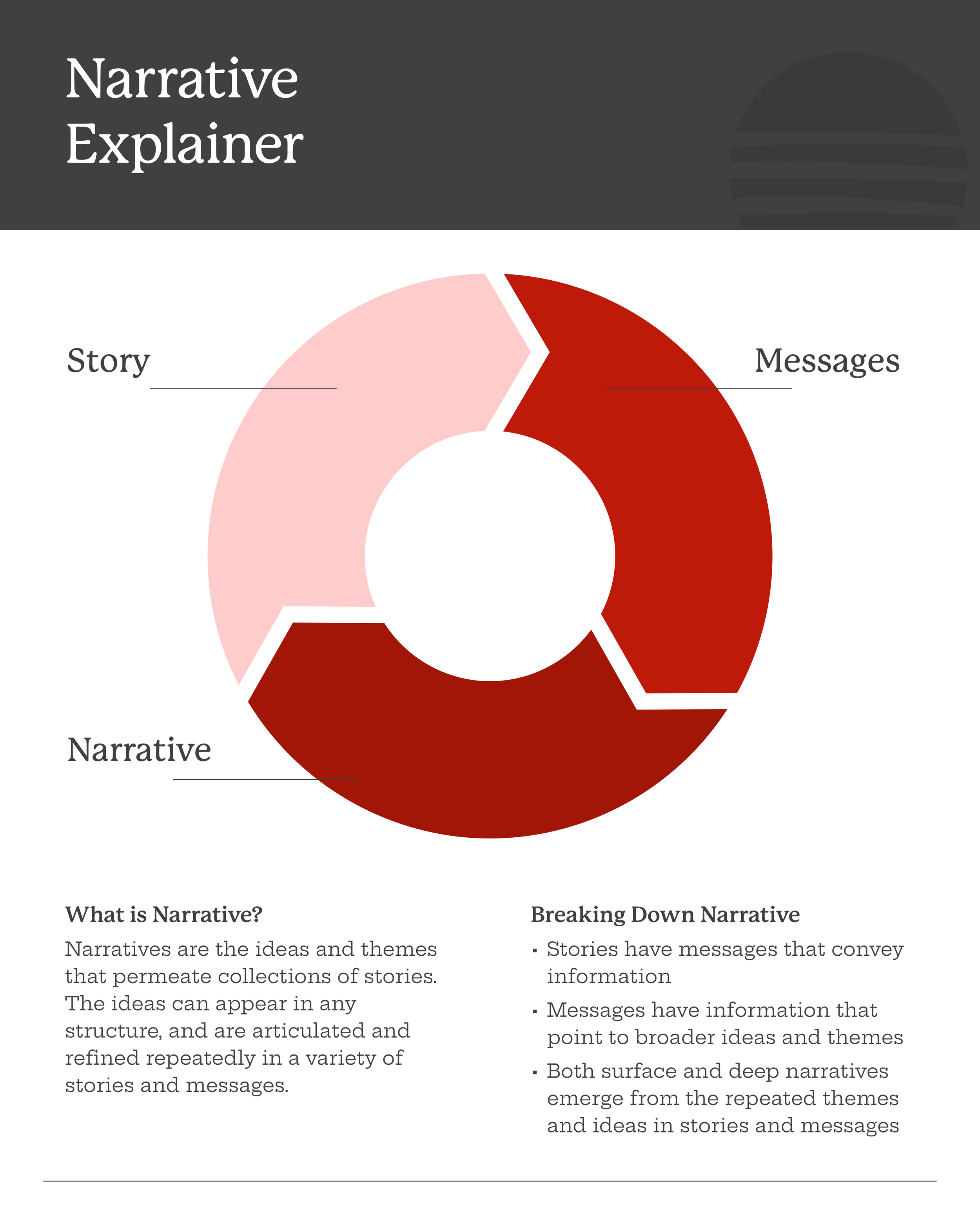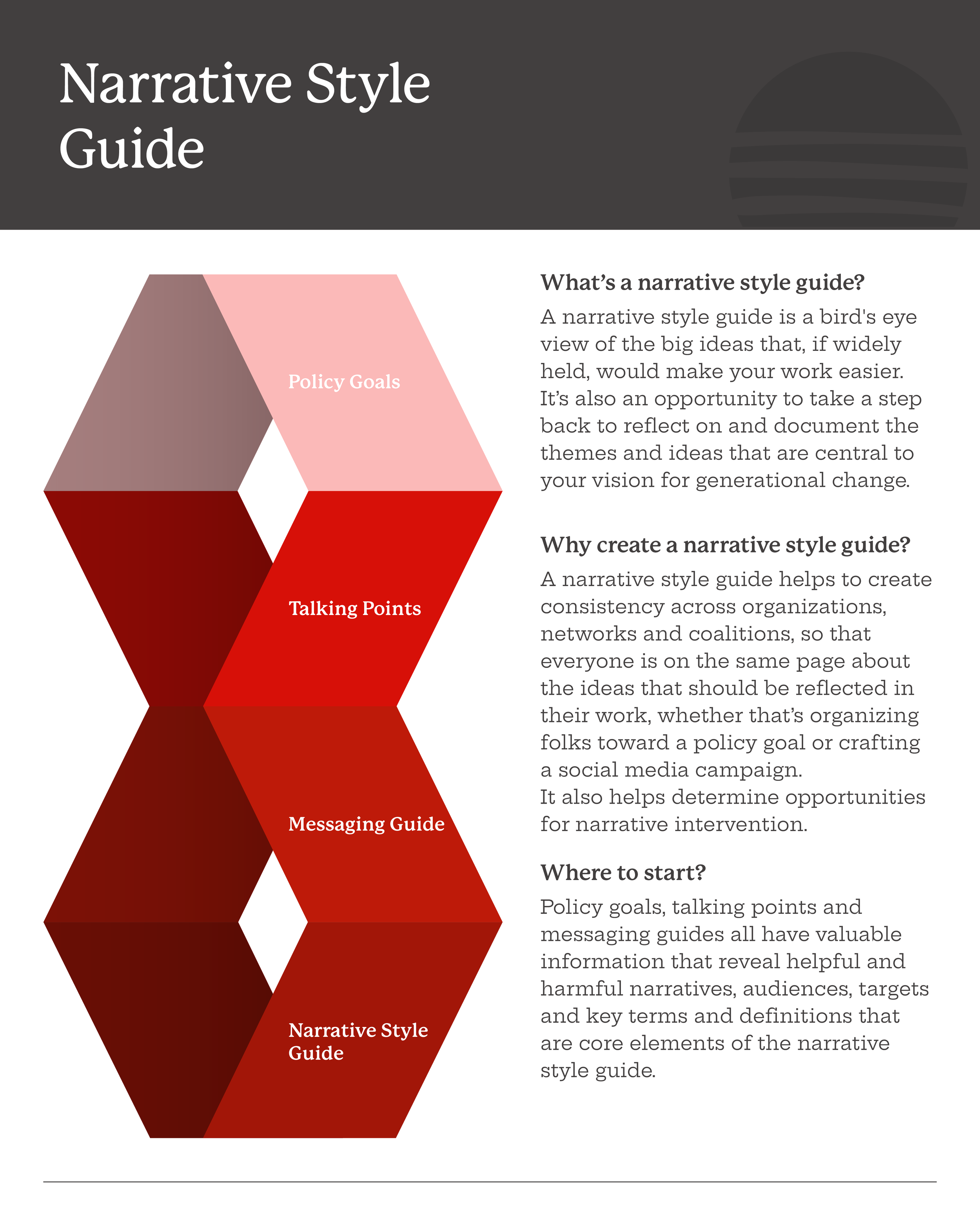Narrative Style Guide vs Messaging Guide
Most of us working in racial and social justice organizations have probably heard of messaging guides; we may have even written a few ourselves. So why have a narrative style guide? Very good question. We’re going to start with the basics:
What’s a messaging guide?
Messaging guide is a strategic communications tool that an organization can use broadly to share the language they use to talk about their mission, values and policy goals both internally and externally. Messaging guides can also be created for projects, programs and campaigns. They often include talking points and are usually issue specific, like this one from International Planned Parenthood Federation on how to talk about abortion through rights-based messaging.
What’s a narrative style guide?
A narrative style guide is a bird's eye view of the big ideas that, if widely held, would make your work easier. It’s also an opportunity to take a step back to reflect on and document the themes and ideas that are central to your vision for generational change. We have a template under the Resource section of our website that you can use.
Why create a narrative style guide?
When we’re identifying narratives, we start with stories, extract the messages and then identify the broader themes that are conveyed. A narrative style guide is similar in that we use policy goals, talking points, messaging guides and other internal and external communications to identify what helpful and harmful narratives emerge.
We developed the narrative style guide to create a tool that builds a bridge between strategic communications and narrative for our Changemaker organizations. It provides a foundation both for us to understand the long-term goals of our partners to inform our work together and also provides them with a tangible tool they can use to make sure their communications are serving not only their short-term campaign and policy goals but their generational vision for a just future. It helps make sure that everyone on your team, from program to communications, are working toward the same goals.
It can also serve as a narrative organizing tool, providing a jumping off point with external partners to find the overlaps in your narrative goals. We have found that the narrative style guide reveals the connections across issues. Harmful narrative themes around things like deservedness and scarcity appear whether you’re talking about sustainable development in Ghana, guaranteed income for mothers in Washington, DC or accessible education opportunities for incarcerated people across the U.S. At the same time, helpful narratives uplifting abundance and our collective humanity appear across those same issues.
We hope that the Narrative Style Guide can be helpful to organizations who are incorporating.


